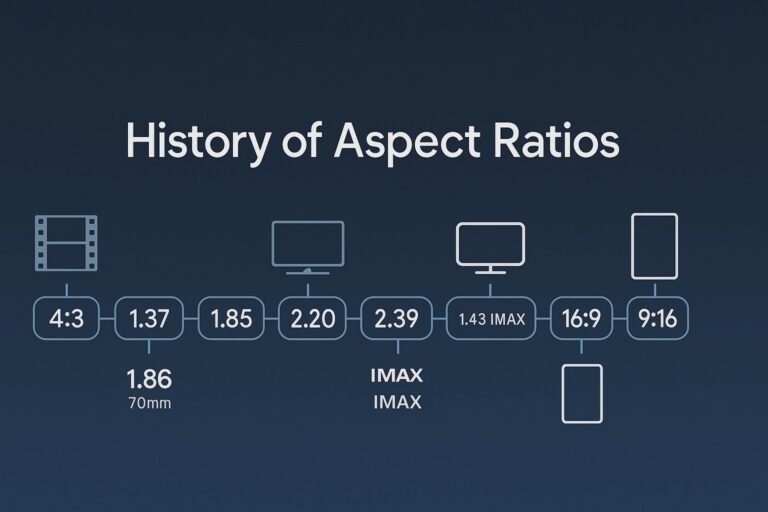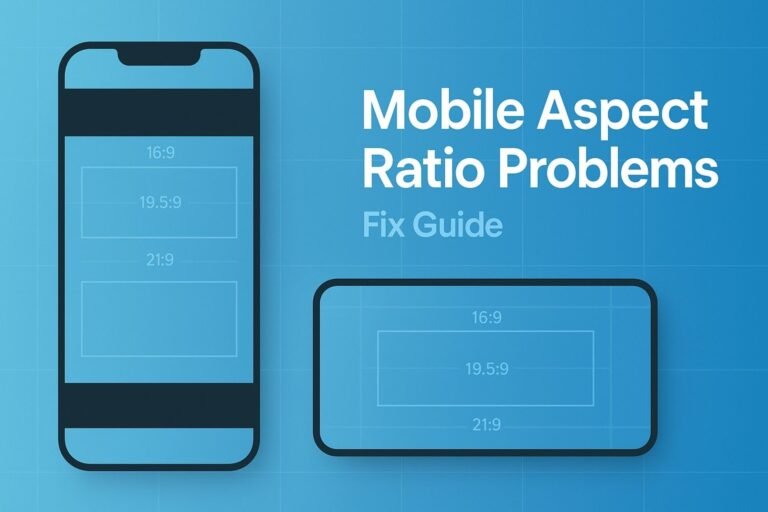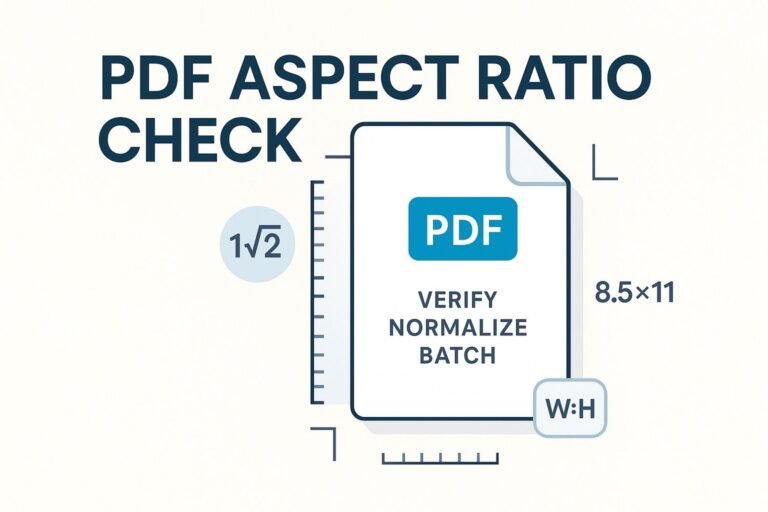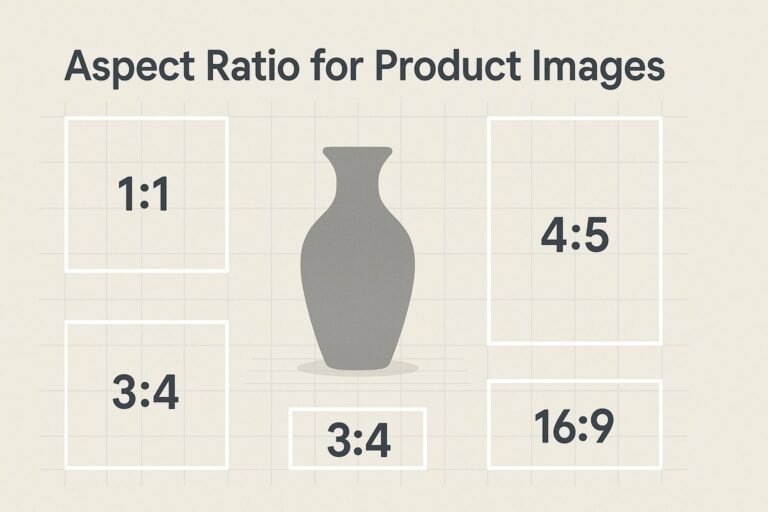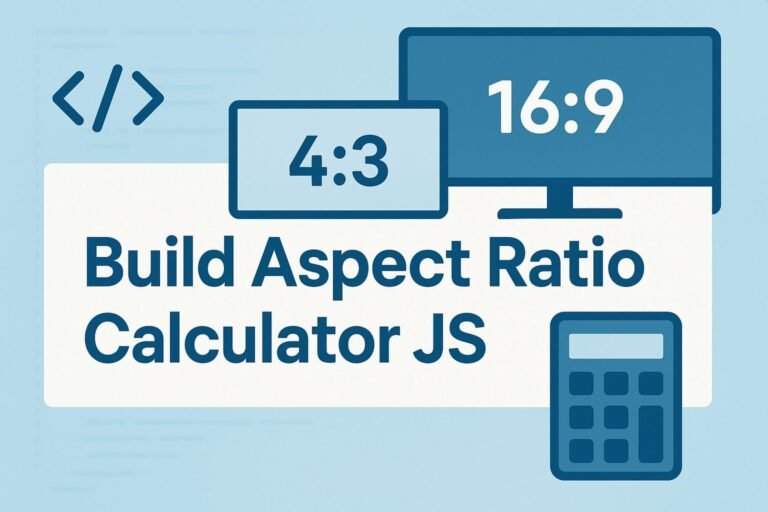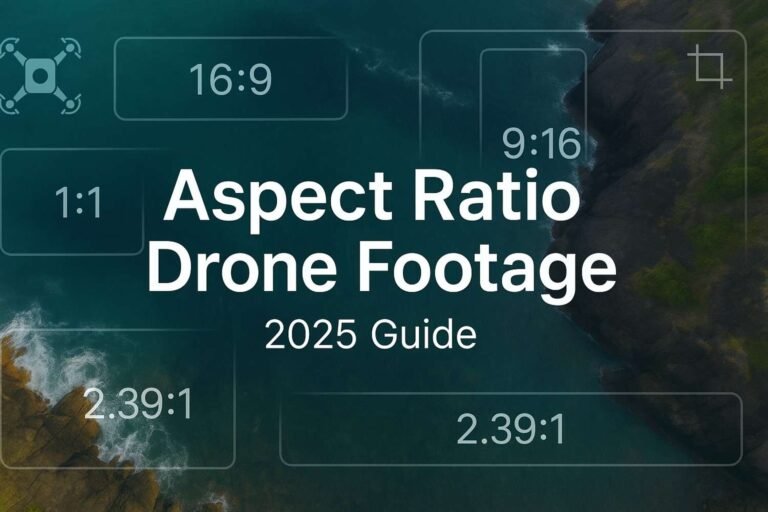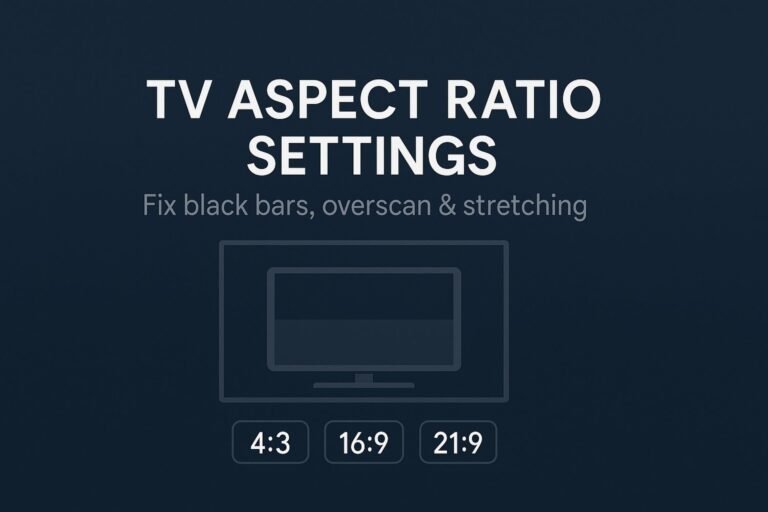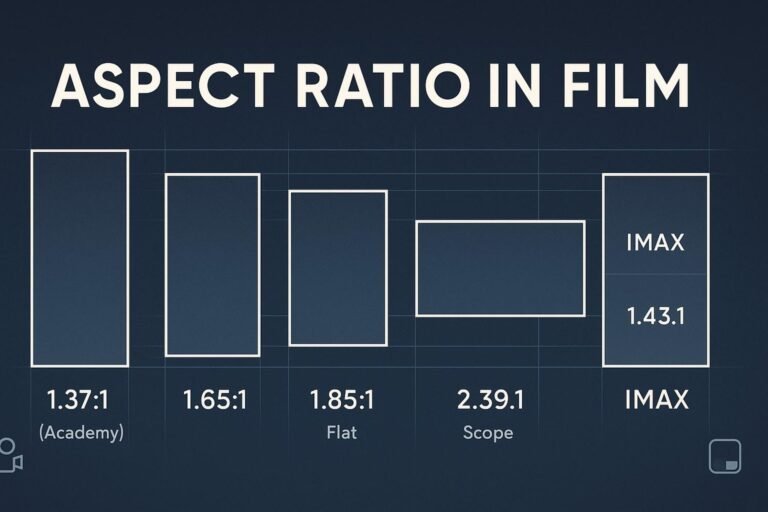What is an aspect ratio?
Aspect ratio is the proportional relationship of a frame’s width to its height. A frame that is 1.85 times wider than it is tall is written as 1.85:1. Change the ratio and you change composition, where the eye travels, and how images feel. That’s why the history of aspect ratios isn’t just technical—it’s creative.
Origins: 35mm film and the 1.33:1 frame
By the 1890s, 35mm film with four perforations per frame emerged as a practical standard. Its usable image area worked out to roughly 1.33:1 (4:3), which defined the silent era’s look. This “square-ish” frame emphasized vertical composition, head-to-toe blocking, and central staging.
1932: The Academy ratio, 1.37:1
When synchronized sound arrived, an optical soundtrack was added alongside the image. To make room without changing the film stock, the image area shrank slightly, yielding the 1.37:1 Academy ratio standardized in 1932. Countless classics—newsreels to prestige dramas—were photographed for this frame.
The widescreen boom of the 1950s
Television’s rise threatened theaters, so cinema got wider. The 1950s saw a wave of widescreen formats designed to feel grander than a living-room TV:
- 1.66:1 (popular in parts of Europe)
- 1.85:1 (the U.S. “flat” widescreen workhorse)
- Anamorphic systems (e.g., CinemaScope), initially ~2.55:1 with magnetic sound, later adjusted to 2.35:1 when optical sound returned
These formats widened horizons—literally—letting filmmakers stage action across the frame and immerse audiences with panoramic vistas.
Why 2.35:1 became 2.39:1 (and why people say “2.40”)
As projection standards evolved, the anamorphic theatrical standard was refined to help hide splice flashes and improve presentation. That’s why modern “Scope” projection is 2.39:1 (often rounded to 2.40:1 in conversation) instead of the older 2.35:1.
70mm and IMAX: big film, tall frames
70mm systems like Todd-AO and Super Panavision commonly presented at 2.20:1, offering clarity and scale. IMAX uses a much taller frame—classic 15/70 film is 1.43:1, while many modern digital IMAX venues present at 1.90:1. The result is towering imagery that prioritizes vertical immersion.
Television: from 4:3 to 16:9
Early TV adopted 4:3 largely because it aligned with existing film material and viewer familiarity. Decades later, as high-definition broadcasting was developed, engineers looked for a single frame that could gracefully host both cinema-wide and TV-tall imagery.
How 16:9 was chosen (the geometric-mean story)
Engineer Kerns H. Powers famously demonstrated that 16:9 (1.78:1) is a smart compromise: it’s the geometric mean between tall TV and wide cinema frames. In simple terms, it can enclose common movie ratios and fit inside them with minimal wasted area. That elegant math—and practical broadcast considerations—helped make 16:9 the HDTV standard.
Rule-of-thumb math: √(4/3 × ~2.39) ≈ 1.77 → standardized as 1.78:1 (16:9).
Streaming & smartphones: 2.00:1 and vertical 9:16
Digital platforms brought new habits and screens:
- 2.00:1 (Univisium)—a middle ground popularized by cinematographer Vittorio Storaro—has seen a resurgence on streaming because it feels cinematic without heavy letterboxing on 16:9 TVs.
- Phone displays stretched to 18:9 (2:1), 19.5:9, and beyond—meanwhile, social video normalized vertical 9:16, where the phone fills top to bottom.
Why aspect ratios matter for storytelling
- Character intimacy: Taller frames (1.37–1.66) favor faces and full-body compositions.
- Epic scope: Wider frames (2.39) stretch landscapes and action laterally.
- Time & mood shifts: Changing ratios within a title cues era changes or emotional beats.
- Platform fit: 2.00:1 reduces letterboxing on TVs; 9:16 fills the phone without rotation.
Cheat sheet: picking an aspect ratio
| Ratio | Best for | Notes |
|---|---|---|
| 1.37–1.66 | Period pieces, portrait-forward dramas | Classic feel; great for vertical compositions |
| 1.85 | Drama, comedy, docs | Modern “flat” theatrical workhorse; versatile |
| 2.39 (Scope) | Action, vistas, spectacle | Panoramic; mind the headroom in close-ups |
| 2.00 (Univisium) | Streaming series, hybrid releases | Balanced look with lighter TV letterboxing |
| 1.78 (16:9) | TV, YouTube | Native for HDTV; minimal bars |
| 9:16 / 1:1 | Social-first, mobile video | Design for thumb-zone and captions |
Quick timeline
- 1890s–1909: 35mm four-perf becomes standard; image ~1.33:1.
- 1932: Academy ratio standardized at 1.37:1 to accommodate optical sound.
- 1950s: Widescreen proliferation—1.66, 1.85, 2.55→2.35 anamorphic.
- 1970s onward: Anamorphic projection refined to 2.39:1 (often called 2.40).
- 1960s–present: 70mm (2.20:1) and IMAX (1.43:1; many digital venues 1.90:1).
- 1980s–1990s: 16:9 chosen for HDTV as a “one size fits most” frame.
- 2010s–2020s: 2.00:1 resurges on streaming; vertical 9:16 goes mainstream.
FAQs
Why do some people say 2.35:1 and others 2.40:1?
Historically, anamorphic exhibition shifted from 2.35:1 to 2.39:1 to improve projection. Many people round 2.39 to 2.40 in casual use.
Is 16:9 really a compromise?
Yes. 16:9 (1.78:1) sits between tall TV and wide cinema frames. It encloses and fits inside the common ratios with minimal wasted area—ideal for HDTV and modern displays.
What’s the difference between letterboxing and pillarboxing?
Letterboxing adds bars top/bottom when the source is wider than the screen. Pillarboxing adds bars left/right when the source is taller or narrower than the screen.
What aspect ratio does IMAX use?
Classic 15/70 IMAX film is 1.43:1. Many digital IMAX auditoriums present at 1.90:1, which still looks taller than standard 1.85 theatrical frames.
How do I choose the right aspect ratio for my project?
Start with where your audience watches (TV, phone, theater) and how you want scenes to feel. For scale and spectacle, try 2.39. For character-first drama, 1.85 or 1.66. For streaming, 2.00 is a great middle ground. For social media, design natively for 9:16.

